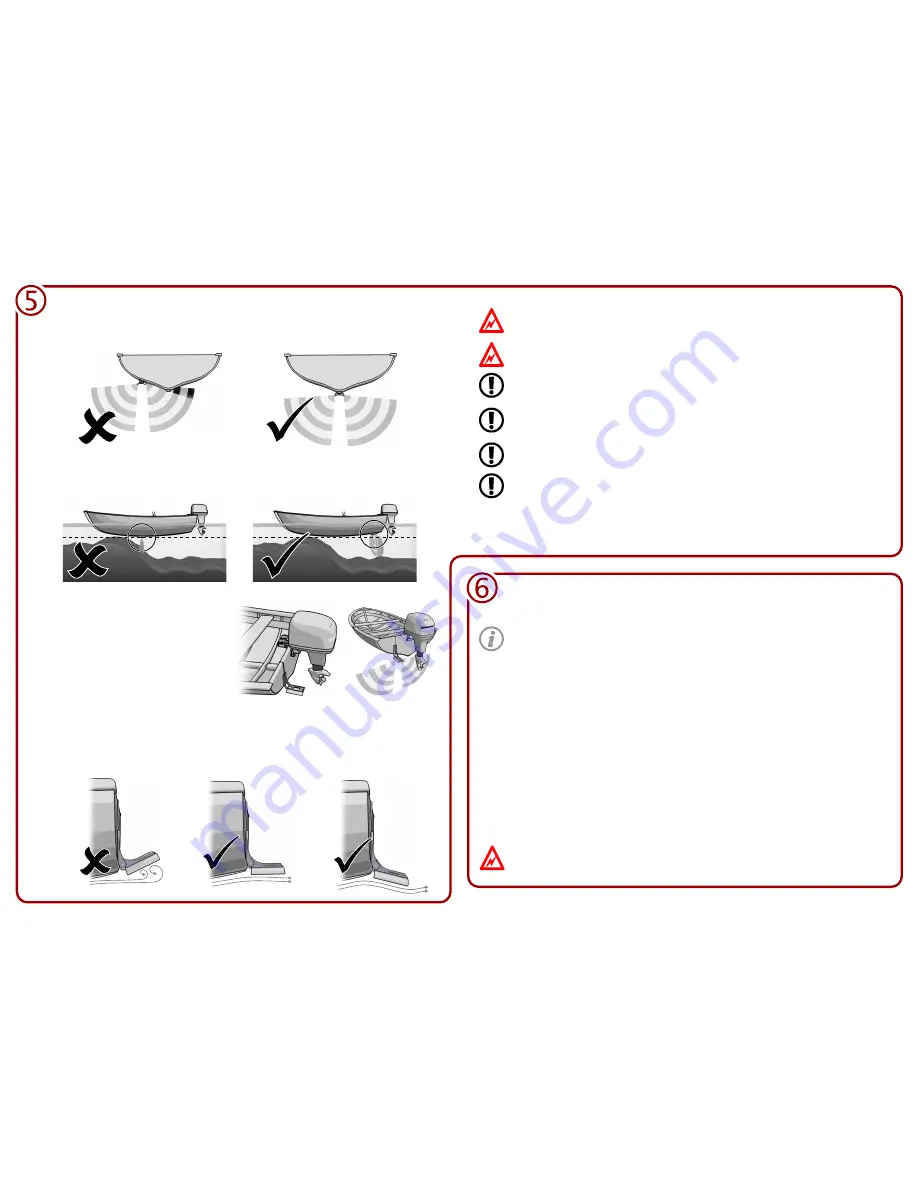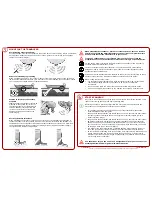
START SCANNING
You should not rely on the sonar as a navigational aid for your vessel, or for
avoiding shallows, submerged or mid-water hazards.
Once you've connected and set-up the sonar as described in the previous sections, you're
ready to start towing the sonar and begin collecting data.
Operating the sonar is relatively straightforward, but there are a few guidelines and
precautions you should observe to achieve the best results…
·
·
·
·
·
·
For the best image results, ensure the mounting of the transducer meets all the
recommendations in the user guide.
Keep the boat speed constant, and ideally between 1 and 4 knots for the best results.
At slower speeds more display lines will be acquired for smaller targets (giving a
higher resolution image).
Be aware of hazards to navigation and the sonar transducer. The sonar transducer
head will only show you the depth of the seabed below it, not from the surface, and
not in front of it. So, if you are scanning in close proximity to the seabed, you should
be keeping a close eye on the sonar display.
If in doubt of the underwater terrain or possible hazards, always assume the worst
case, and give plenty of clearance between the sonar transducer and the seabed.
As your StarFish is operating close to the surface, its imagery may be distorted by the
motion of the boat due to waves and surface chop on the water, or it may receive
reflections from these at longer ranges. Consequently, your StarFish will not perform
well in rough stormy conditions.
Keep the boat speed constant, and ideally between 1 and 4 knots for the best results.
P/N: BP00085.2
UM-103-P00085-02
Copyright © 2010 Tritech International Limited & Blueprint Design Engineering Limited, all rights reserved.
MOUNTING THE TRANDUCER
Avoid creating acoustic shadows…
Acoustic shadows will create blind spots in the sonar's field of vision and may reduce its maximum
working range. Reflections from the hull may create a 'ghost' or mirror image of the opposite
channel on the sonar display.
Reduce vulnerability to grounding
When mounting the sonar on your vessel, make sure there is always a point on the hull that is
lower than the transducers location. This will reduce the risk of damage to the transducer should
you run aground or collide with any submerged obstacle.
Position in relation to the vessels
propeller
Ideally the StarFish transducer should be
mounted to the vessels hull in front of
the vessels propeller, as this introduces
small air-bubbles into the water which
in-turn act as reflectors of sound and
degrade the range and quality of the
sonar imagery.
Avoid cavitation & turbulence
When mounting the transducer onto the hull of your boat, it is important that a location is
chosen that under normal conditions is known to be free from turbulence and aeration. You
should also ensure the transducer is angled such that cavitation and turbulence is minimised
on the transmitter and receiver surfaces as this may distort or degrade the sonar imagery.
The figures below illustrate this principle…
When attaching the transducer, bracket or cable to the boat, choose a location
and fixing such that the watertight nature of the hull is not compromised! If in
doubt, please contact the manufacturer of your vessel.
If using an outboard motor to propel and steer your boat, ensure that the
propeller does not touch the transducer when the steering is at its extremities.
Try and keep a minimum distance of 400mm between the transducer and propeller to
minimise mechanical interference (noise).
If it is not possible to mount the transducer in front of the propeller, efforts should
instead be made to mount the transducer lower than it, such that its turbulence does
not obstruct the acoustic beams.
Avoid mounting the transducer behind features on the hull of your vessel (such as rivets,
strakes or steps) that may introduce cavitation or turbulence into the water.
When routing the transducer cable…
Try to avoid running it parallel and in close proximity to other high-current cables,
radio antenna cables or anything else that may be a source of electrical
interference.
Do not bend the cable to a radius less than 30mm as this may shorten its life.
Do not use a fixing method that may cut, damage or excessively crush the cable.
·
·
·












